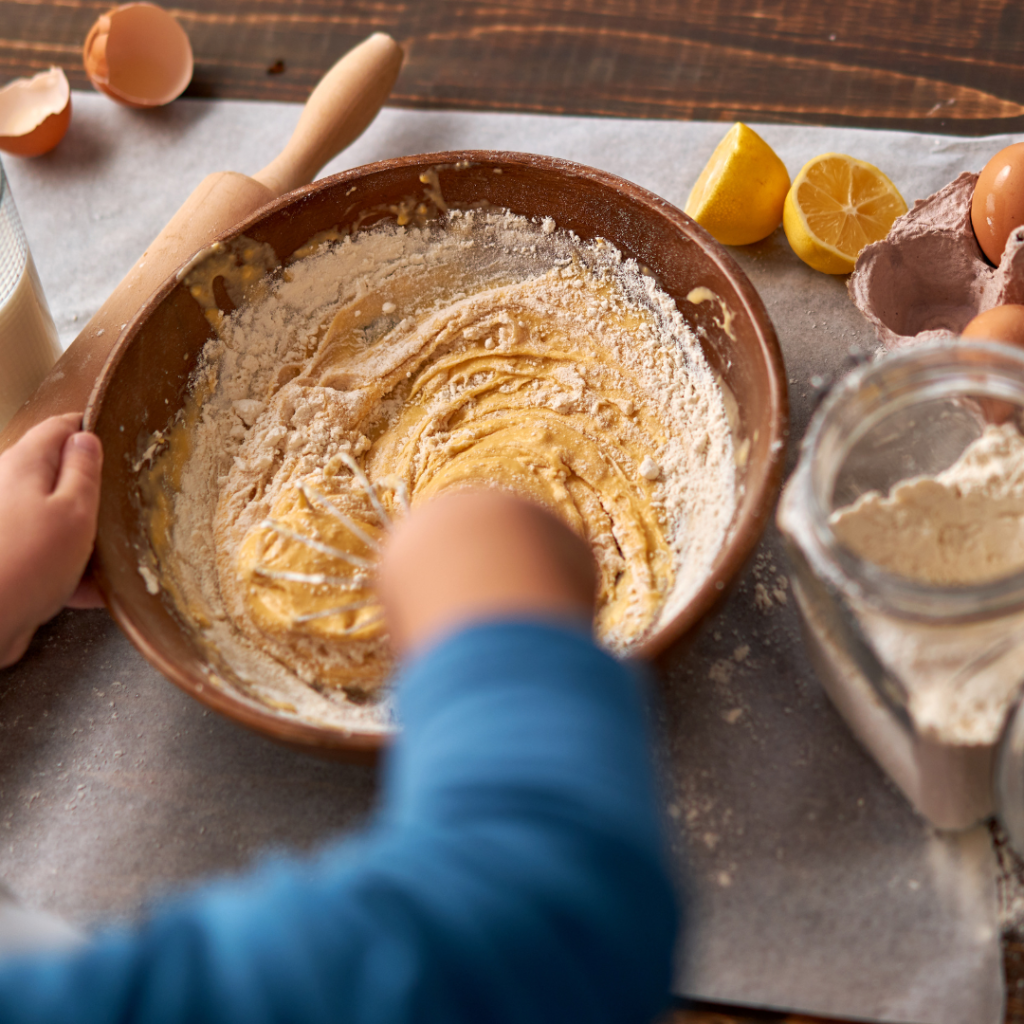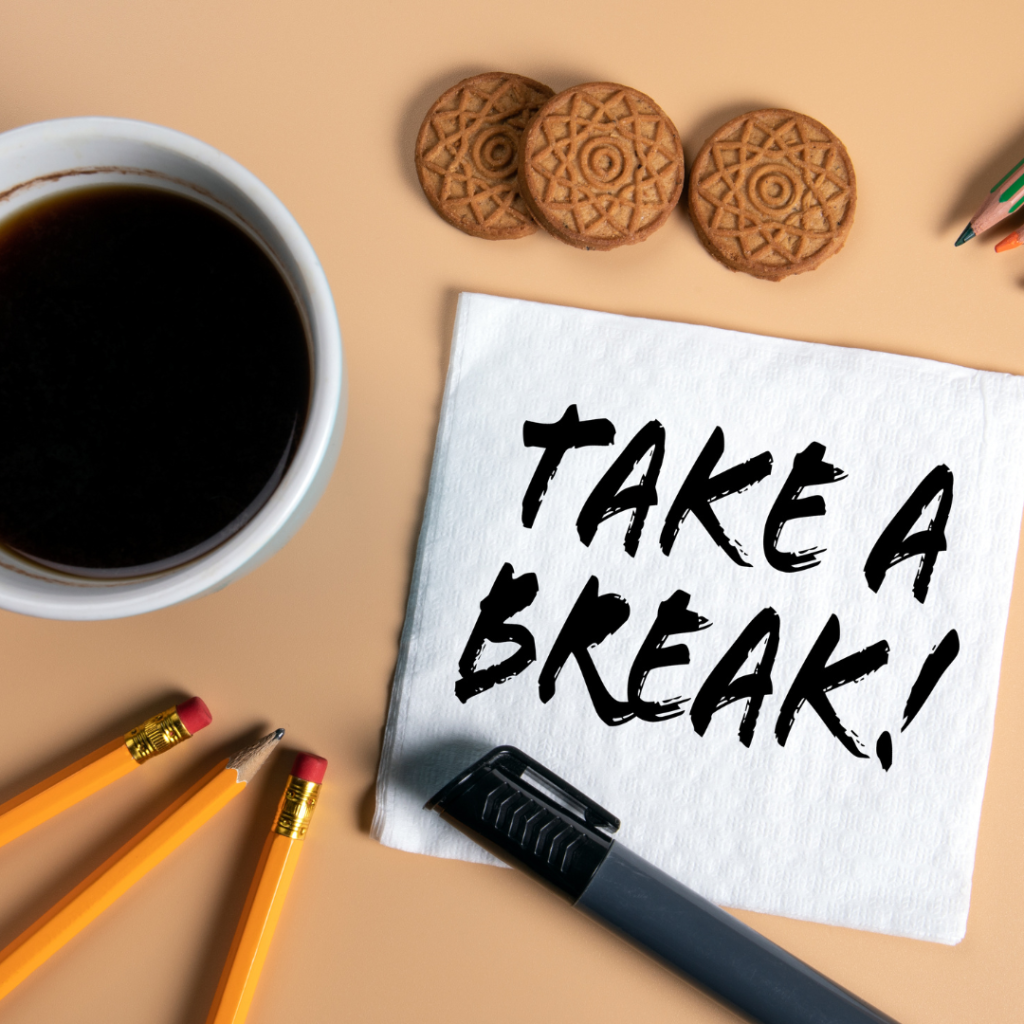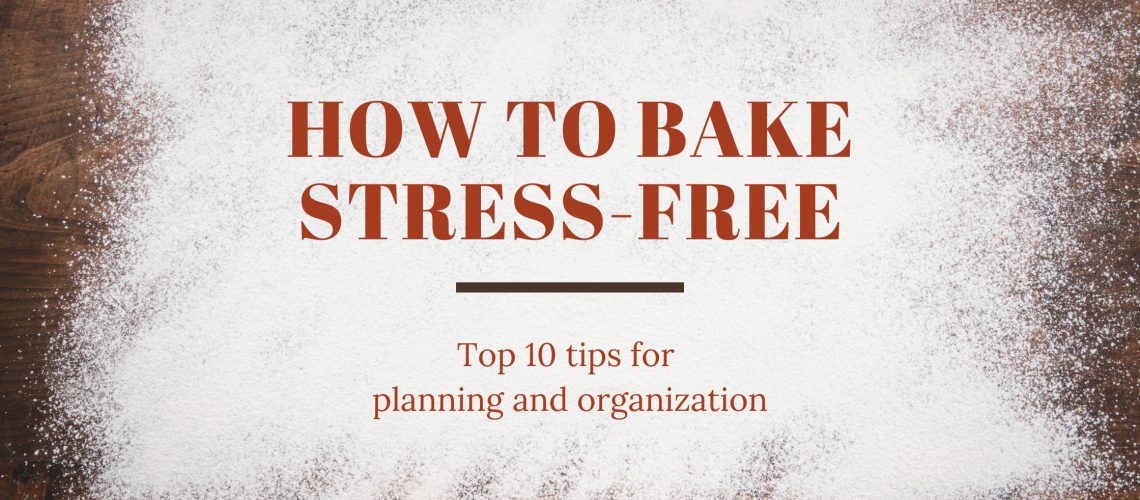Baking feels like therapy to me. I’ll admit, I’m not a morning person by any stretch. You won’t catch me leaping out of bed for early workouts or sunrise meditations. But when there’s fresh bread to prepare or sourdough to bake, you can bet I’ll be up with the birds. There’s something truly magical about the aroma of cookies or muffins baking in the oven—it’s an instant stress-reliever. I’m sure many of you can relate to the calming effect baking has. However, I understand that for some, it can feel like a daunting task, even exhausting at times. But fear not, fellow bakers, I have the perfect solution(s) to make your baking experience as smooth as butter.
Baking can feel like quite the undertaking when we encounter challenges like complex recipes, disorganized kitchens or workspaces, missing ingredients, or simply feeling burned out during the process. But fear not, there’s a simple solution to all of these woes: planning ahead. Now, I know what you’re thinking—after a long day of making lists and planning our lives, the last thing we want to do is create another plan for baking. But trust me, it’s worth it in the long run.
With just a bit of planning, preparation, and organization, I can assure you that baking won’t feel like such a daunting task. In this post, I’ll be sharing 10 tips to help make your baking sessions a stress-free experience!
Why is Baking a therapy?
Before diving into the tips, I want to highlight why baking can be therapeutic for you. There are several reasons why baking can have a therapeutic effect:
1. Mindfulness: Baking requires your full attention, from measuring ingredients to following instructions. This mindfulness can help distract from stressors and promote relaxation.
2. Creativity: Baking allows for creativity in flavors, decorations, and presentations. Engaging in creative activities can be deeply fulfilling and provide a sense of accomplishment.
3. Sensory Stimulation: The process of baking stimulates multiple senses, including touch, smell, and taste. These sensory experiences can evoke positive emotions and memories, contributing to a sense of well-being.
4. Immediate Gratification: Baking often results in a tangible, delicious product that can be enjoyed immediately. This instant gratification can boost mood and provide a sense of satisfaction.
5. Therapeutic Routines: Following a recipe and methodical baking process can create a sense of structure and routine, which can be comforting, especially during times of stress or uncertainty.
6. Sharing and Connection: Baked goods are often shared with others, fostering social connections and creating opportunities for meaningful interactions, which can have positive effects on mental health.
Overall, baking provides a combination of sensory experiences, creativity, and social connection that can be deeply therapeutic for many people. Now that we know why Baking is a stress reliever rather than stress giver, let’s see the ways in which you can make baking a fun activity.
Top 10 Tips to Make Baking Stress-Free!
Now we know that baking can indeed be a relaxing and enjoyable experience with the right approach. Here are some organization and preparation tips to make your baking endeavors stress-free:
1. Plan Ahead, Read the Recipe

Yes, I know, another list to make! But trust me, planning is key here. Whatever you’re planning to bake, take the time to thoroughly read the recipe. Recipes are packed with valuable details: cooking and prep times, ingredient lists with special tips, detailed instructions on how to prepare the dish, and even special notes from the author.
It’s like having a roadmap for your baking journey—all the hard work is already laid out for you. Your job is simply to double-check the ingredients, ensure they’re in your pantry, prep them as instructed, and follow the directions to a tee.
It’s fantastic if you can remember recipes off the top of your head, but having pen and paper nearby is always a smart move. Especially if you’re using an online recipe, jotting it down and pinning it up at your workstation can be incredibly helpful. This way, you’re not constantly darting around to check the recipe from other sources.
2. Make a shopping list
You’ve already taken the time to read through the recipe in advance, which is fantastic! This gives you a good understanding of the ingredients and kitchen utensils/equipment you’ll need, as well as what you might be missing.
Now, it’s time to prepare a comprehensive list of all the ingredients you’ll require and do your shopping all at once. See? I told you, planning ahead and checking your ingredients beforehand means you won’t have to make last-minute runs to the store.

I speak from experience. Running my own home bakery for quite some time now, I’ve lost count of the occasions when I had to drop everything mid-process just to rush out and buy an ingredient I’d run out of. I’ll admit, I got a bit lazy with my ordering, and I paid the price for it—delayed baking, late orders, and plenty of unnecessary panic. Trust me, it’s not worth it! So, take the time to check and double-check your pantry and store, scan through your recipes, and you’ll ensure a smooth baking experience every time.
3. Organize Ingredients

“Mise-en-place!” It’s a French phrase that translates to “put in place” or “gather.” In the culinary world, it signifies the preparation and organization of ingredients and equipment before cooking or serving. During my time working in a bakery, I frequently heard this term from my senior chefs: “Do the mise! Do the mise!”
At first, I wasn’t familiar with the term, but I soon learned that it meant Mise-en-place, which involves preparing and organizing all the necessary ingredients before starting the baking process.
Once you’ve read through the recipe, you’ll have a clear idea of what ingredients you need and in what quantities. Some recipes may specify softened butter or room-temperature eggs, for example. By organizing your ingredients according to the recipe, you ensure that everything is measured out and at the proper temperature before you begin. This level of preparation leads to a smoother baking process overall, with everything flowing seamlessly from one step to the next.
4. Prep your workspace
The next step is to prepare your workspace. This involves clearing the countertops in your kitchen where you plan to prepare and bake. Your workspace should have the recipe pinned up for easy reference, with all the ingredients measured and prepped out, as well as the necessary equipment for baking, such as mixing bowls, measuring cups and spoons, spatulas, baking pans, and so on.
Any other items can be moved aside until you’re ready to start baking. This ensures that you have everything you need at your fingertips and can focus solely on the baking process without any distractions.

Having a clear countertop not only helps keep you focused on the task at hand but also prevents a cluttered mind. Another helpful tip is to take plenty of photos and videos during the baking process. Not only does this ensure that you have a clean and tidy workspace, perfect for sharing on Instagram, but it also helps minimize unnecessary clutter. Even if you don’t plan on sharing them, documenting the process in this way can help maintain organization and clarity throughout your workstation.
5. Follow a baking timeline

This step circles back to reading the recipe once again! By following the instructions outlined in the recipe, you can break down the baking process into manageable steps and create a timeline for each task. This can be tailored to your convenience and schedule. It’s important to ensure that you’re not preoccupied with other tasks that might force you to abandon the baking process midway.
If the recipe includes resting times and you can complete other tasks within that timeframe, that’s ideal. However, if you anticipate conflicts, it’s crucial to adjust either your schedule or the baking timeline accordingly. This ensures that you can devote your full attention to each step of the baking process without interruptions.
It’s true that one of the most common sources of stress in baking comes from not achieving the desired results. Often, this disappointment stems from not adhering to the necessary timeline for baking. That’s why it’s crucial to follow a timeline diligently. Following the timeline means allocating specific time slots for prep work, baking, cooling, and any additional steps like frosting or decorating. For instance, cutting into a hot loaf of bread or decorating a freshly baked cake without allowing it proper cooling time can yield disastrous results, leading to a stressful baking experience. By sticking to the timeline and allowing each step its due time, you can greatly increase your chances of success and enjoy a smoother baking process overall.
6. Use kitchen gadgets
Using manual effort in certain types of bakes, like breads, can indeed be beneficial. Kneading dough by hand allows you to feel the texture and ensure it reaches the desired consistency, which might be more challenging to achieve with a machine. However, it’s also important to leverage the gadgets in your kitchen.
Whether it’s stand mixers, food processors, hand blenders, electric mixers, microwaves, or any other tools, incorporating them into your baking routine can streamline the process and reduce manual effort. These gadgets not only simplify tasks but also free up your time and energy to focus on other aspects of baking, ultimately enhancing your overall experience in the kitchen.

If you only bake occasionally, you might not feel inclined to invest in all the gadgets and equipment. In that case, manual work is your only option. However, if you’re an avid baker or bake frequently, I highly recommend investing in a few basic gadgets that can make the process much easier. While it’s satisfying to do everything by hand, even heroes need a sidekick from time to time! Let these tools and gadgets assist you in making baking a fun and enjoyable activity rather than a chore. They can simplify tasks, save time, and enhance your overall baking experience, allowing you to focus on the creative and enjoyable aspects of the process.
You can check out my post on ‘Must have tools for a baker’ (thank me later) which is a valuable resource for anyone who bakes regularly.
7. Clean as you go

Before diving into professional baking training, I was a hobby baker, squeezing in baking sessions whenever I could find time between my studies. The most rewarding part was undoubtedly seeing my creations come out of the oven perfectly and receiving compliments from everyone on the cakes, cookies, bread, and more.
However, the dreaded cleanup afterward was always the worst part for me. Oh, how I used to despise tidying up after myself! My poor mother often scolded me for neglecting to clean the kitchen properly. But once I embarked on my professional training journey, I quickly learned the importance of cleaning up as you go.
It’s a simple habit that can make a world of difference in maintaining an organized and efficient workspace.
During almost a month of my four-month industrial training, I dedicated my time to learning the ins and outs of cleaning the bakery, organizing ingredients, and maintaining a tidy workspace. Working alongside senior chefs, I realized the immense importance of cleanliness in a professional kitchen. Keeping your workspace tidy by promptly cleaning up spills and ensuring that ingredients and equipment are stored away as you progress not only prevents clutter from accumulating but also significantly simplifies the cleanup process. It’s a simple yet essential practice that contributes to a more efficient and enjoyable baking experience.
8. Stay organized
I’ve found that making videos and taking photographs of the entire baking process has been incredibly helpful in keeping my kitchen counter clean and staying organized. By documenting each step, I’m more mindful of maintaining a tidy workspace.
Additionally, keeping your ingredients and tools organized throughout the baking process can make a big difference. As an added bonus, arranging them according to their usage in a recipe can streamline the baking process even further.
Labeling containers, using separate bowls for wet and dry ingredients, and grouping similar items together for easy access are all simple yet effective strategies for staying organized while baking.

I always make it a point to measure out every ingredient and arrange them neatly on a tray or platter before starting to bake. For instance, I’ll place all the dry ingredients like flour, salt, baking powder, and cocoa powder in separate bowls, and then place those bowls on one tray. To keep everything organized, I often write the name of the dish on a sticky note and place it on the tray, indicating which set of ingredients corresponds to which dish. You can adopt this approach or come up with your own method that works best for you. After all, it’s your baking process, and the goal is to make it as comfortable and stress-free as possible!
9. Double-Check Measurements

I can’t stress this enough! If you’ve thoroughly read the recipe, you’ll be mindful of the measurements. More often than not, baking stress stems from your desired treat not turning out as expected. It’s disheartening to put in all that effort and planning, only to end up with a result that’s not up to par.
It’s completely normal to feel frustrated, unhappy, and upset in such situations. Beginner bakers, this message is especially for you. Baking is a beautiful blend of science and art. The foundation of any baked good lies in its ingredients.
That’s why it’s absolutely crucial to pay close attention to both the ingredients and their measurements.
Often, our ingredients are past their prime, which can pose problems in baking, especially with items like baking powder, yeast, and flours. It’s essential to carefully check the expiration dates of your ingredients before adding them to your bakes. Additionally, accurate measurements are paramount for achieving perfect bakes every time. In baking, even the slightest variation—be it a teaspoon more or less—can significantly impact the appearance, taste, and texture of the final product. Therefore, it’s crucial to double-check your measurements to ensure the success of your recipes.
10. Take Breaks
I understand that baking serves different purposes for each of you. Some bake to take a break from their regular schedule, while others bake more frequently, and some even bake professionally.
Here’s a tip for all bakers—whether occasional, avid, or professional: Remember to take a break! Don’t push yourself too hard. If you find yourself baking for an extended period, make sure to take short breaks to rest and recharge.
Maintaining a healthy balance between baking and relaxation is essential. Not only does it prevent burnout, but it also allows you to enjoy the process more fully.

Baking is meant to be therapeutic, not an additional source of stress. Having baked professionally for 7-8 years, I’ve come to realize that baking brings me joy. While there may be occasional moments of heavy workload and stress related to specific orders, it’s crucial to take small breaks during extended baking sessions. Personally, I’ve made it a priority to maintain balance in my baking endeavors. If I ever find that baking becomes more stressful than relaxing, I’ll reconsider my passion for it. Taking short breaks to rest and recharge keeps me centered and energized. So, remember not to overextend yourself by baking for long hours—prioritize your well-being above all else.
To Conclude
So, there you have it—my top 10 tips to make your baking experience stress-free! Remember to plan ahead, create that shopping list, organize your ingredients, prep your workspace, follow a timeline, utilize kitchen gadgets, clean as you go, stay organized, double-check measurements, and don’t forget to take a break! By incorporating these organization and preparation tips into your baking routine, you can minimize stress and maximize enjoyment in the kitchen.
Let me know in the comments below how your baking experience turns out. And don’t forget to subscribe to our blog Bakestermind and follow us on our socials with @bakester_mind for many more helpful tips, recipes, reviews, experiences, and much more. I’ll be back soon with a new post!
Happy baking!


